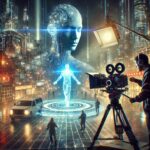From Concept to Creation: The Step-by-Step Process of 3D Animation
3D animation is a fascinating blend of art and technology, bringing characters, objects, and environments to life in ways that captivate audiences. But what goes into creating a high-quality 3D animation? Whether you’re an aspiring animator or simply curious about the process, here’s a step-by-step breakdown of how an idea transforms into a fully rendered animation.
1. Concept & Storyboarding
Every great animation starts with a solid idea. The concept phase involves brainstorming the story, characters, and environments. Once the idea is fleshed out, storyboarding begins—creating a visual blueprint that maps out key scenes, camera angles, and character movements. This step ensures a clear direction before moving into 3D production.
2. 3D Modeling
Using software like Blender, Maya, or 3ds Max, animators create digital 3D models of characters, objects, and environments. Modeling involves defining shapes, adding details, and refining proportions to achieve the desired look. High-poly models capture intricate details, while low-poly models optimize performance for gaming and real-time applications.
3. Texturing & Shading
Raw 3D models appear lifeless without textures and materials. Texturing involves painting or mapping images onto the model’s surface to add realism—like skin pores, fabric patterns, or weathered metal. Shading defines how light interacts with the surfaces, determining if an object looks glossy, matte, translucent, or metallic.
4. Rigging & Skinning
To make a character move, it needs a digital skeleton. Rigging is the process of creating a bone structure that allows movement. After rigging, skinning is applied to ensure the model deforms naturally when animated. A well-rigged character moves smoothly and expresses emotions convincingly.
5. Animation
This is where the magic happens! Animators use keyframing, motion capture, or procedural animation to bring characters and objects to life. They define movement, expressions, and interactions, ensuring they feel natural and engaging. The animation process involves tweaking timing, weight, and anticipation to enhance realism.
6. Lighting & Rendering
Lighting plays a crucial role in setting the mood and realism of a scene. By strategically placing lights, shadows, and reflections, animators enhance depth and drama. Rendering is the final step where the 3D scene is processed into frames, combining all elements—textures, lighting, and animation—into a polished final output.
7. Compositing & Post-Production
After rendering, compositing is done to blend 3D elements with visual effects like smoke, motion blur, and depth of field. Editing software like After Effects or Nuke is used for final touch-ups, color correction, and adding cinematic effects.
Conclusion
The journey from concept to a fully realized 3D animation is intricate but rewarding. Each step—modeling, texturing, rigging, animation, and rendering—contributes to crafting a compelling and visually stunning final product. Whether for films, games, or advertisements, mastering these stages helps bring creative visions to life.
Author











